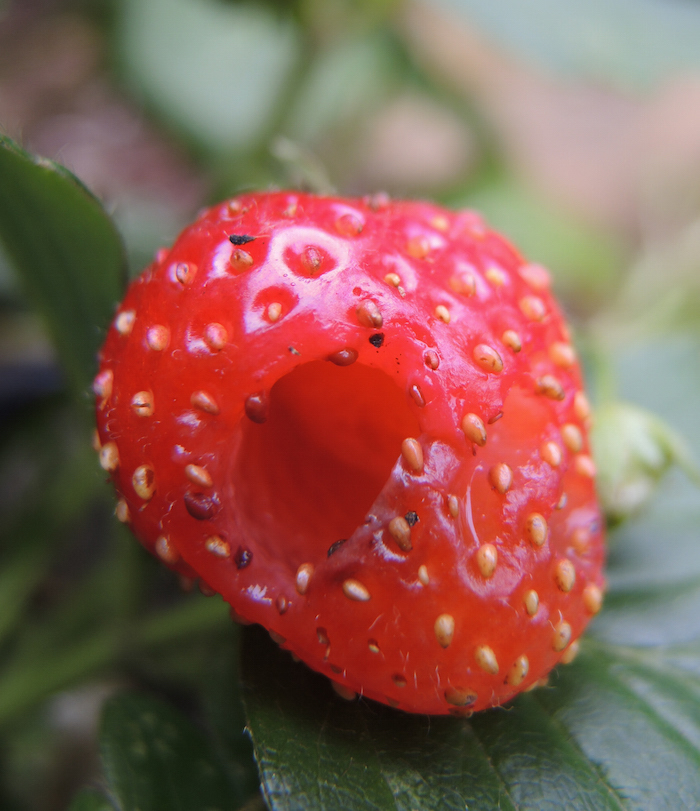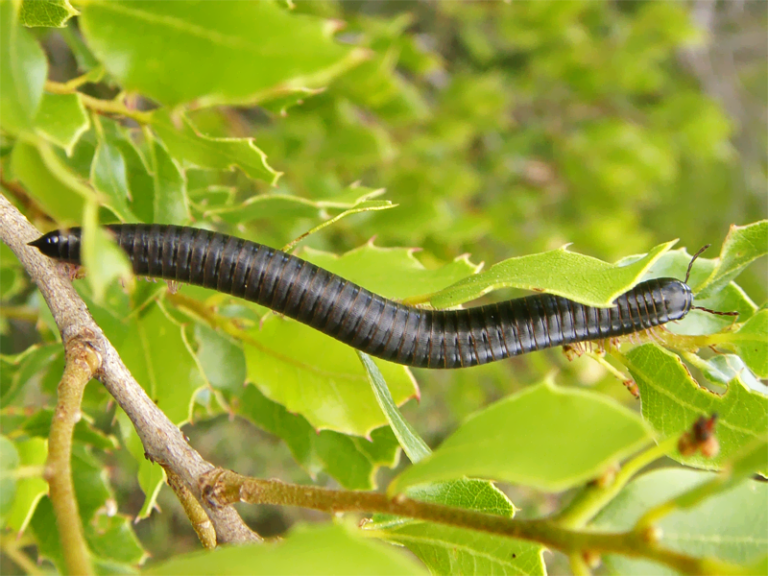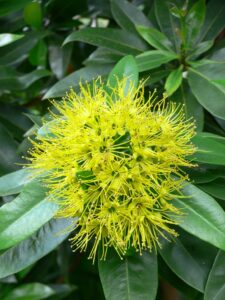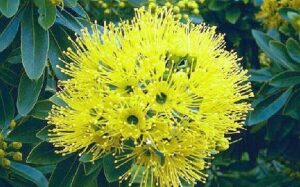The back Portuguese millipede, Ommatoiulus moreletii, is a herbivorous millipede native to Portugal. It is not known just how these millipedes were introduced to Australia but they were first seen at Port Lincoln in 1953. On the Coffs Coast we do not have them in the plague proportions as they do in the Adelaide Hills, on the Eyre Peninsula and in parts of Victoria, BUT we do have them!
Adult black Portuguese millipedes are smooth, 20-45mm long and are coloured slate-grey to black with between 40 and 50 body segments. Each of these body segments has 2 pairs of legs – although the first few may only have a single pair of legs. The immature ones are striped and light brown. The Portuguese millipede’s eyes become larger and more complex with age – these changes can determine approximately the age of that particular millipede.
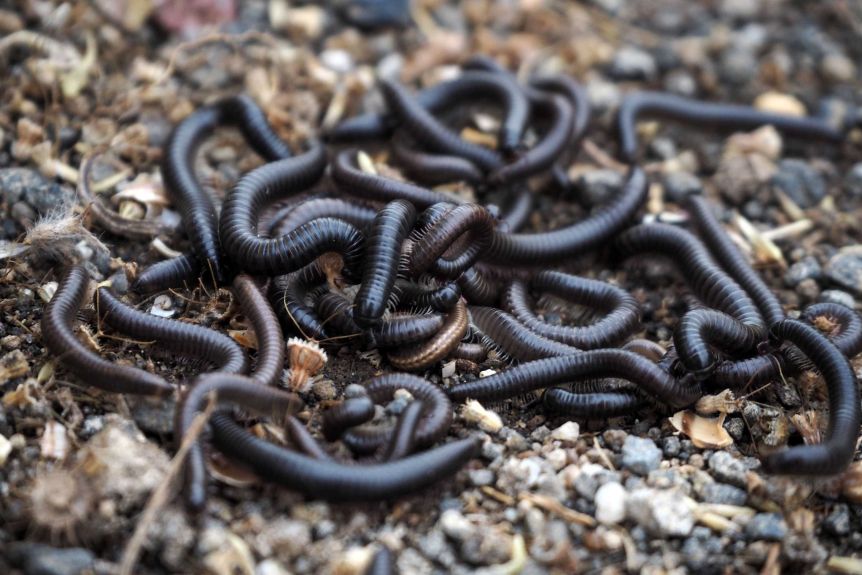
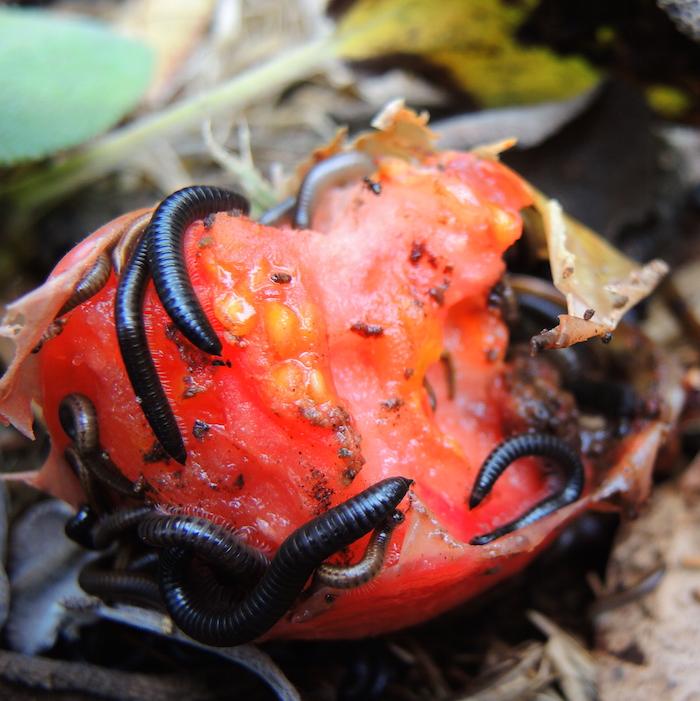
Portuguese millipedes hatch from eggs in the soil, and initially have only 3 pairs of legs. They moult as they grow, adding segments and legs as they go until they reach maturity at around 2 years. During hot dry weather they will remain hidden in the soil. Rainy weather in spring and particularly autumn stimulates activity, often leading to enormous outbreaks of thousands of millipedes on the surface.
They are at their most active at night and like nothing better than soft fruit, but will eat the soft tissue of seedlings and even root vegetables at ground level. These millipedes will move great distances to get to their food source – tomato trellises are absolutely no barrier – they just climb up them! They have an excellent defence mechanism, by secreting a pungent yellowish fluid containing hydrogen cyanide – this is absolutely foul and will stain your clothes permanently and will irritate your eyes.
Because Portuguese millipedes are not native to Australia there are no natural predators and therefore have flourished into plague proportions. There were so many millipedes crushed crossing the railway tracks at Tallarook, central Victoria in March 2009 causing train cancellations due to the disturbance of signalling equipment! It is also reported that a minor train crash in 2013 was caused by crushed millipedes they impeded deceleration of the train.
Adult males are periodomorphic, alternating between a sexual and non-sexual form. In their sexual form (late summer to spring), they have gonopods (specially modified mating legs) in the seventh body segment, which allows them to mate with females. When the sexual males moult in spring they lose the gonopods and are unable to mate and remain in this non-sexual ‘eunuch’ form until their late summer moult.
Barriers seem to be the best way to stop these little critters from munching away at your tomatoes, strawberries, seedlings and root vegetables. These can be light traps (as they are attracted to the light), or a chemical barrier. The best idea would be to seek advice from your local nursery.
